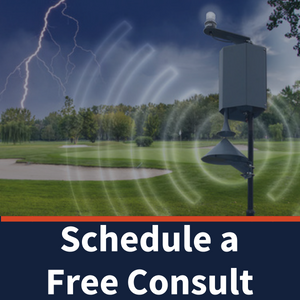3 Ways to Improve the Sustainability of your Parks and Recreation Facilities
- May 02, 2018

Who doesn’t love the outdoors? Did you know the typical American visits their local park and recreation facilities around twice a month, or 22 times per year? That number comes from Parks and Recreation Magazine and is easy to believe as Americans cherish having easy access to nature and natural resources in their own local environment.
Parks and recreation facilities do a lot for the communities they are in. For example, they strengthen the connection to nature, improve the health of the community, and protect natural resources. But how sustainable are the parks and recreational facilities around the country and how hard is it to improve that sustainability?
Sustainability is a broad term that generally means that a person or society lives within the means of what the Earth can provide over the long term. When we talk about parks and recreation sustainability, we’re talking about the commitment to social, economic, and environmental factors that promote the long-term survival of those facilities.
There are plenty of risks that threaten parks and recreation facilities, so there are also many ways to mitigate those risks and improve sustainability. Keep reading to explore three ways to improve sustainability at any park or recreation location.
3 Ways to Improve Parks and Recreation Sustainability
1. Aim for Energy Independence
The first way you can improve sustainability at your parks and rec facility is to put an energy plan in place that will lead your community down the road to energy independence. This includes setting the following goals:
- Improve energy efficiency in places like parks, community centers, and during daily administrative practices
- Expand the collection and use of solar power and other renewable energy sources at parks and facilities
- Replace or renovate obsolete energy or inefficient infrastructure
How do you reach these goals? Well it’s important to make use of solar panels at facilities that receive enough sunlight like roofs of facilities, farms, and parking lots. It’s also important to make sure you’re adding initiatives that encourage conserving power during daily tasks. You can also add better lightbulbs and power efficient equipment to parks and recreation facilities. The most important thing is to make energy-friendly decisions and promote an energy-friendly sentiment within your community.
2. Optimize Water Resources and Flood Protection
The next thing you can do to improve parks and rec suitability is to optimize facility water resources and take flood protection into account. Depending on your location and seasonal weather patterns, different areas throughout the United States have different water resource issues. For example, California often has an increased risk of summer water shortages than New York. While drought is an issue in some places, flooding is an issue in others. Hurricane Harvey showed us just how destructive widespread flooding can be in the city of Houston.
Your goals at a parks and recreation facility, no matter your location, should be to:
- Conserve water
- Protect water quality
- Partner with local flood control entities to contribute flood protection efforts
- Use flood warning technology
To achieve these goals, parks and recreation officials should look at their irrigation systems integrated with weather technology, so they don’t turn off if it’s raining or going to rain. Another way you can reach these goals is to test water quality in water fountains, pools, and natural bodies of water throughout the year. Your team should also get severe weather warnings from a trusted source, like the National Weather Service, delivered in an easy-to-understand way so you know when storms are headed your way.
3. Plan for Severe Weather
The next thing you can do is plan for severe weather.
Virtually everywhere in the United States is subject to extreme weather conditions, with instances increasing year by year. Potential weather events may vary be region but can include flooding, thunderstorms, hurricanes, blizzards, droughts, extreme temperatures, and wildfires.
Parks and Recreation Magazine found that four in five survey respondents expressed concern about their community’s ability to withstand or recover quickly from natural disasters. This comes as no surprise after the year 2017 saw one of the most active hurricane seasons ever, an ongoing wildfire battle on the west coast, and floods. However, what’s remarkable is that this survey was conducted before hurricane season even started. The fact is: Everyday citizens are worry about how weather impacts their day-to-day lives.
That means you can’t take the weather for granted. Real-time, hyperlocal commercial weather data is a parks and recreation facility’s best bet for safeguarding their people and infrastructure from dangerous weather conditions. A real-time weather map that is easy to read is perfect in forecasting upcoming weather events. The more time you have to prepare, the better off you are when it comes to hurricanes, thunderstorms, and other severe weather threats.
What Next?
There are plenty of other ways to improve sustainability at your parks and recreation facilities. However, the first step is to document a plan with goals, how you plan to reach those goals, and what community support you’ll require. If you have an idea you don’t see on our list, please add it in the comments below.







